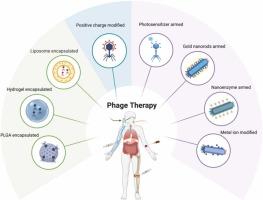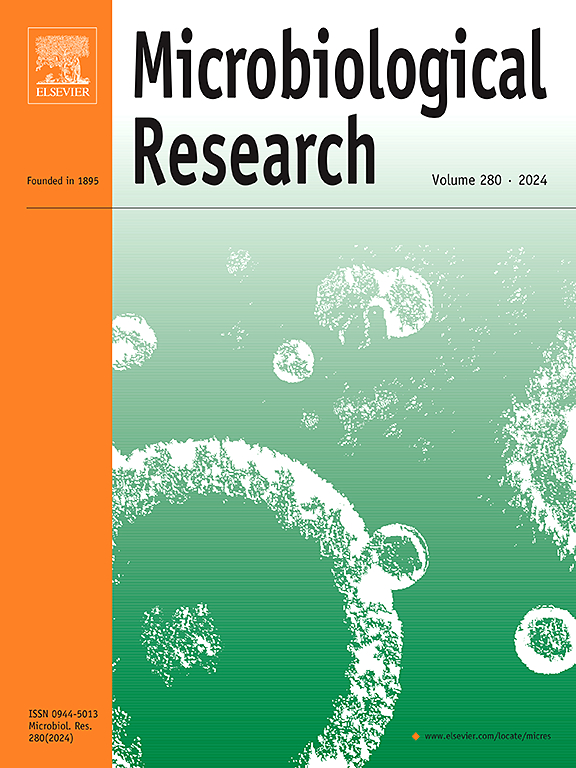Biomaterial-driven innovations in phage therapy: Current strategies and future perspectives
IF 6.9
1区 生物学
Q1 MICROBIOLOGY
引用次数: 0
Abstract
The escalating threat of antimicrobial resistance underscores the urgent need for innovative therapeutic strategies. Phage therapy has experienced a resurgence over the past five years following a prolonged period of neglect during the antibiotic era. Despite its therapeutic promise, critical barriers impede clinical translation, including susceptibility to interference from the host's complex physiological environment, a narrow host range, and the inability to lyse intracellular bacteria. To address these limitations and optimize the efficacy of phage-mediated treatment, recent research has increasingly focused on biomaterial-assisted approaches aimed at enhancing therapeutic efficacy. In this review, we concentrate on recent progress in biomaterial-assisted phage-based treatment strategies, including phage physical encapsulation strategies and phage surface chemical coupling strategies. Physical encapsulation employs liposomes, hydrogels, pH-sensitive polymers and etc. for controlled phage delivery, while surface chemical coupling modifies phage capsids with photosensitizers, nanozymes, or metal nanoparticles to enable multifunctional bactericidal mechanisms. In addition, accessibility for phage therapy of intracellular bacteria is discussed. We also conclude key biomaterial selection criteria-prioritizing biosafety, biodegradability, and microenvironment adaptability, and offer novel perspectives for advancing therapeutic precision as well as multidimensional innovation in combating antimicrobial resistance.

生物材料驱动的噬菌体治疗创新:当前策略和未来展望。
抗菌素耐药性的威胁不断升级,强调迫切需要创新的治疗策略。噬菌体疗法在抗生素时代长期被忽视后,在过去的五年里经历了复苏。尽管它具有治疗前景,但阻碍临床转化的关键障碍包括对宿主复杂生理环境干扰的易感性,宿主范围狭窄,以及无法裂解细胞内细菌。为了解决这些局限性并优化噬菌体介导治疗的效果,最近的研究越来越关注旨在提高治疗效果的生物材料辅助方法。本文综述了近年来生物材料辅助噬菌体治疗策略的研究进展,包括噬菌体物理包封策略和噬菌体表面化学偶联策略。物理封装采用脂质体、水凝胶、ph敏感聚合物等来控制噬菌体的传递,而表面化学偶联使用光敏剂、纳米酶或金属纳米颗粒修饰噬菌体衣壳,以实现多功能杀菌机制。此外,还讨论了细胞内细菌噬菌体治疗的可及性。我们还总结了生物材料选择的关键标准——优先考虑生物安全性、生物可降解性和微环境适应性,并为提高治疗精度和对抗抗生素耐药性的多维创新提供了新的视角。
本文章由计算机程序翻译,如有差异,请以英文原文为准。
求助全文
约1分钟内获得全文
求助全文
来源期刊

Microbiological research
生物-微生物学
CiteScore
10.90
自引率
6.00%
发文量
249
审稿时长
29 days
期刊介绍:
Microbiological Research is devoted to publishing reports on prokaryotic and eukaryotic microorganisms such as yeasts, fungi, bacteria, archaea, and protozoa. Research on interactions between pathogenic microorganisms and their environment or hosts are also covered.
 求助内容:
求助内容: 应助结果提醒方式:
应助结果提醒方式:


